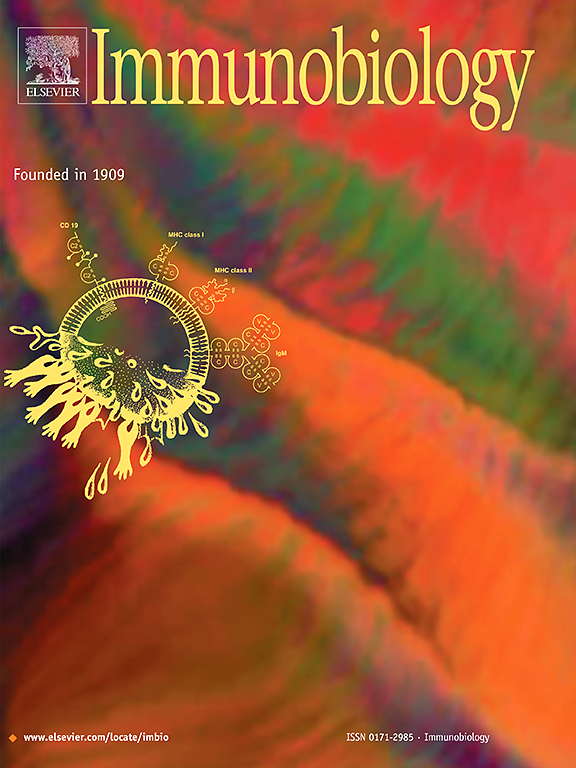Integrated transcriptomic, metabolomic, and lipidomic analyses reveal a unique lipid profile of regulatory T cells upon activation
IF 2.3
4区 医学
Q3 IMMUNOLOGY
引用次数: 0
Abstract
Regulatory T cells (Tregs) exhibit stable FOXP3 expression and regulate the immune response through suppressive activity. Their unique metabolic properties include increased glycolysis and oxidative phosphorylation. We combined transcriptomic, metabolomic, and lipidomic analyses to dissect the metabolic dynamics of Tregs upon activation. Combined metabolomic and lipidomic analyses showed that freshly isolated and activated Tregs had distinct metabolomic and lipidomic properties, respectively. Compared with activated effector T cells (Teffs), activated Tregs contained omega-3 long-chain polyunsaturated fatty acid (PUFA)-rich diglycerides and triglycerides. These were supported by transcriptomics data, showing upregulation of PPAR-alpha and PPAR-gamma. Compared with activated Teffs, activated Tregs exhibited greater ceramide production, consistent with the upregulation of ceramide synthase and sphingomyelin synthase. Confocal microscopy revealed that Tregs, in contrast to Teffs, were enriched in lysosomes and peroxisomes upon activation. Our data confirm the unique metabolic properties of Tregs, especially those characterized by omega-3 long-chain PUFA-rich triglycerides and ceramides, together with enriched lysosomes and peroxisomes, which correspond to metabolic alterations.
综合转录组学、代谢组学和脂质组学分析揭示了调节性T细胞在激活时的独特脂质谱
调节性T细胞(Tregs)表现出稳定的FOXP3表达,并通过抑制活性调节免疫反应。它们独特的代谢特性包括增加糖酵解和氧化磷酸化。我们结合转录组学、代谢组学和脂质组学分析来剖析Tregs激活后的代谢动力学。代谢组学和脂质组学分析表明,新分离的Tregs和活化的Tregs分别具有不同的代谢组学和脂质组学特性。与活化的效应T细胞(Teffs)相比,活化的Tregs细胞含有富含omega-3长链多不饱和脂肪酸(PUFA)的甘油三酯和甘油三酯。转录组学数据支持了这一观点,显示ppar - α和ppar - γ上调。与活化的Teffs相比,活化的Tregs产生更多的神经酰胺,这与神经酰胺合成酶和鞘磷脂合成酶的上调一致。共聚焦显微镜显示,与Teffs相比,Tregs在激活后富含溶酶体和过氧化物酶体。我们的数据证实了Tregs独特的代谢特性,特别是那些以富含omega-3长链pufa的甘油三酯和神经酰胺为特征的Tregs,以及丰富的溶酶体和过氧化物酶体,它们对应于代谢改变。
本文章由计算机程序翻译,如有差异,请以英文原文为准。
求助全文
约1分钟内获得全文
求助全文
来源期刊

Immunobiology
医学-免疫学
CiteScore
5.00
自引率
3.60%
发文量
108
审稿时长
55 days
期刊介绍:
Immunobiology is a peer-reviewed journal that publishes highly innovative research approaches for a wide range of immunological subjects, including
• Innate Immunity,
• Adaptive Immunity,
• Complement Biology,
• Macrophage and Dendritic Cell Biology,
• Parasite Immunology,
• Tumour Immunology,
• Clinical Immunology,
• Immunogenetics,
• Immunotherapy and
• Immunopathology of infectious, allergic and autoimmune disease.
 求助内容:
求助内容: 应助结果提醒方式:
应助结果提醒方式:


